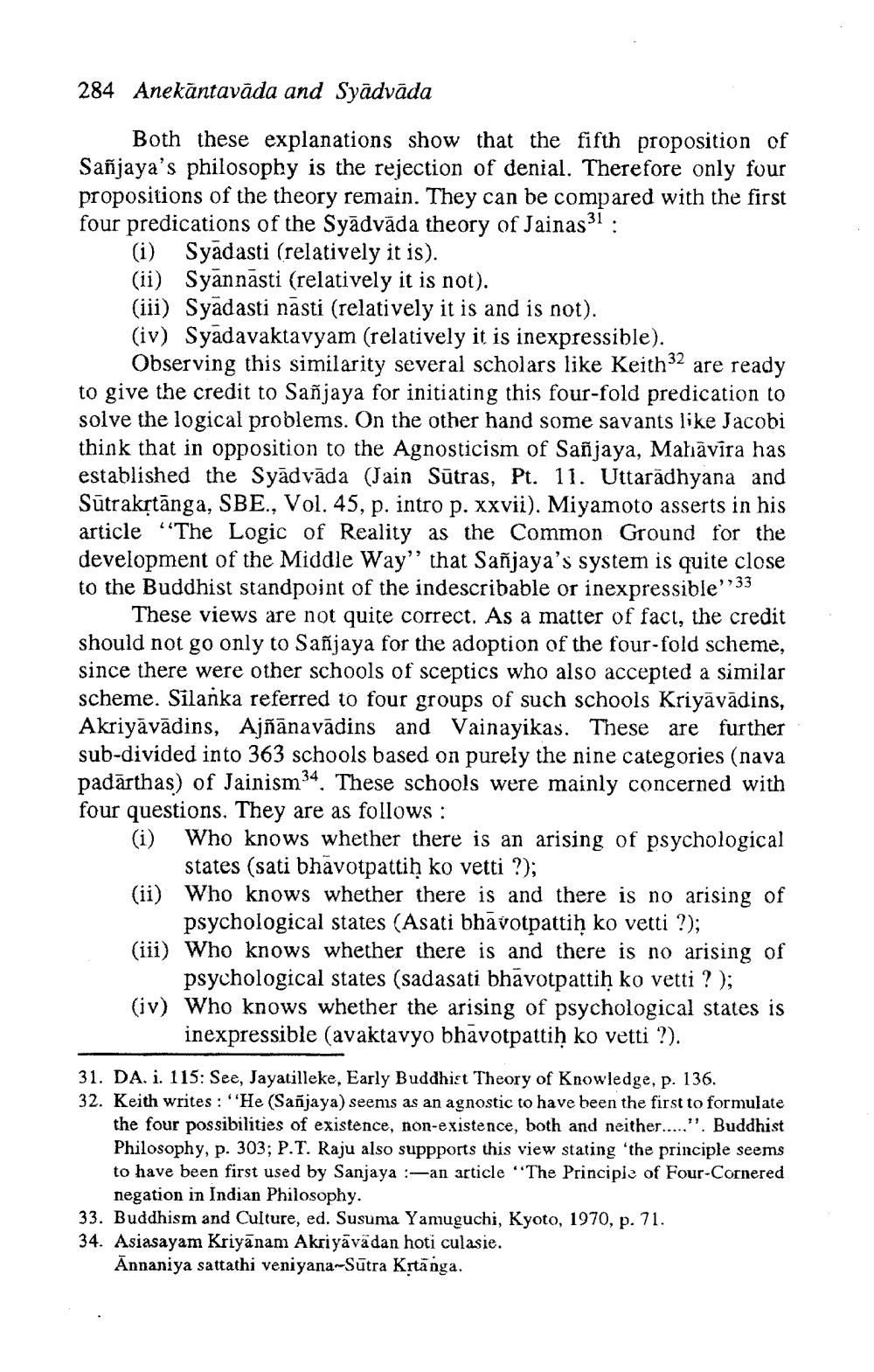________________
284 Anekāntavāda and Syādvāda
Both these explanations show that the fifth proposition of Sañjaya's philosophy is the rejection of denial. Therefore only four propositions of the theory remain. They can be compared with the first four predications of the Syādvāda theory of Jainas 31 :
(i) Syadasti (relatively it is). (ii) Syānnāsti (relatively it is not). (iii) Syadasti nasti (relatively it is and is not). (iv) Syadavakta vyam (relatively it is inexpressible).
Observing this similarity several scholars like Keith 32 are ready to give the credit to Sañjaya for initiating this four-fold predication to solve the logical problems. On the other hand some savants like Jacobi think that in opposition to the Agnosticism of Sañjaya, Mahāvīra has established the Syādvāda (Jain Sūtras, Pt. 11. Uttarādhyana and Sūtrakstānga, SBE., Vol. 45, p. intro p. xxvii). Miyamoto asserts in his article "The Logic of Reality as the Common Ground for the development of the Middle Way” that Sañjaya's system is quite close to the Buddhist standpoint of the indescribable or inexpressible':33
These views are not quite correct. As a matter of fact, the credit should not go only to Sañjaya for the adoption of the four-fold scheme, since there were other schools of sceptics who also accepted a similar scheme. Silanka referred to four groups of such schools Kriyāvādins, Akriyavādins, Ajñänavädins and Vainayikas. These are further sub-divided into 363 schools based on purely the nine categories (n padārthas) of Jainism34. These schools were mainly concerned with four questions. They are as follows: (i) Who knows whether there is an arising of psychological
states (sati bhāvotpattiḥ ko vetti ?); (ii) Who knows whether there is and there is no arising of
psychological states (Asati bhavotpattih ko vetti ?); (iii) Who knows whether there is and there is no arising of
psychological states (sadasati bhāvotpattih ko vetti ? ); (iv) Who knows whether the arising of psychological states is
inexpressible (avaktavyo bhavotpattih ko vetti ?).
31. DA. i. 115: See, Jayatilleke, Early Buddhist Theory of Knowledge, p. 136. 32. Keith writes: "He (Sanjaya) seems as an agnostic to have been the first to formulate
the four possibilities of existence, non-existence, both and neither.....". Buddhist Philosophy, p. 303; P.T. Raju also suppports this view stating the principle seems to have been first used by Sanjaya :-an article "The Principle of Four-Cornered
negation in Indian Philosophy. 33. Buddhism and Culture, ed. Susuma Yamuguchi, Kyoto, 1970, p. 71. 34. Asiasayam Kriyānam Akriyavadan hoti culasie.
Ānnaniya sattathi veniyana--Sūtra Krtanga.




